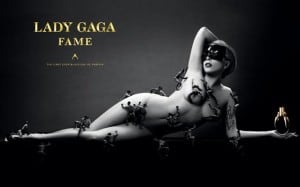Q: i am masturbating right from my adolescence and that too 2-3 times a day.
i want to know that what are the harmful effects of frequent masturbating.
A:
Thanks for being in touch.
Q: i am masturbating right from my adolescence and that too 2-3 times a day.
i want to know that what are the harmful effects of frequent masturbating.
A:
Thanks for being in touch.
My BF wants to spank me (all new to me) how can I make it a hot experience for him? – Strawberry Girl
Hey Sweet Strawberry Girl,
“If you are laying in bed next to someone who really doesn’t make you feel like the goddess you are, you need to rediscover what you truly want and need” – Lady Gaga on The Conversation with Amanda De Cadenet
 Lady Gaga once again proves wise and powerful beyond her years with this profound statement about the nature of fulfillment. She invites anyone who feels a longing, who feels unfulfilled and unmet by their lover to turn our gaze right where it belongs – right into the depths of one’s own heart and mind.
Lady Gaga once again proves wise and powerful beyond her years with this profound statement about the nature of fulfillment. She invites anyone who feels a longing, who feels unfulfilled and unmet by their lover to turn our gaze right where it belongs – right into the depths of one’s own heart and mind.
Our culture often talks about love and romance as something that happens to us – the perfect lover comes along and sweeps us off our feet. The perfect lover knows exactly what we want and has the secret keys to unlocking our arousal and turn-on. The truth is, no one else can give you pleasure – you can only receive as much pleasure as you allow yourself. Two people can eat the same exact meal, and one may find absolute gastronomic bliss while the other shrugs and complains about too much salt.
Lady Gaga flips the standard narrative and asks us to look within if we are not satisfied with our love and sex life. Rather than looking externally for a better lover, instead of waiting for a more charming prince to come around, we must turn inward to rediscover ourselves. In this simple bit of wisdom, Lady Gaga redefines romance.
If you read between the lines, it is clear that Gaga understands that we can only receive what we believe ourselves to be worthy of. So if our lover isn’t fulfilling us, we need to take inventory of what more we need. We can’t expect our lovers to fill holes we don’t even know are there. Through a process of constant self-discovery, we can start understanding our own unique desires and longings, and then reach out and ask our lover to be part of fulfilling those wishes.
This doesn’t have to mean finding a new lover. When we change internally, when we change our relationship to ourselves, all other relationships in our life change. If you can open yourself up to receiving more pleasure, it can be your husband of twenty years who meets you there. If you harness your inner strength and start standing up for yourself, it can be your current boyfriend that supports you every step of the way. Of course, we may find that as we grow our relationships may need to change or end. The fear of this change is what keeps so many people locked in unfulfilling relationships, silently suffering in our own skin. It takes courage and trust to ask for more out of life. We must trust that we are worthy of more, and that there is someone out there that will meet us and love us more fully.
Rediscovering ourselves, realigning our energy with our true goals and desires, is a lifelong process. Gaga, queen of reinvention, can inspire us all to be more playful and flexible with our understandings of who we are and what we want. Once we let go of these being set in stone, life becomes much more interesting and way more exciting.
Thanks for joining the VIP list.
Go check your email and verify your address with one quick click.
After confirmation you’ll be automatically sent to a top-secret page to find out how to download one free Pleasure Mechanics video guide of your choice!
Cheers!
Like millions of women worldwide, we loved the story of seduction between Christian and Anastasia. We read E.L. James’ 50 Shades of Grey with an eye for what we can all learn about sex from the steamy pages. Here is a round-up of the Top 50 Things to Learn About Sex from 50 Shades of Grey. We are also covering each topic below in greater depth in a YouTube video.
Cheers! Chris and Charlotte, The Pleasure Mechanics
Ready to dive into your kinky fantasies? Check out the Erotic Spanking Mastery Course to get started!

Want your life to be more like 50 Shades? Join our newsletter for weekly emails of erotic inspiration and down to earth advice.
Ready to start now? Check out our online courses or browse The Sex Index!